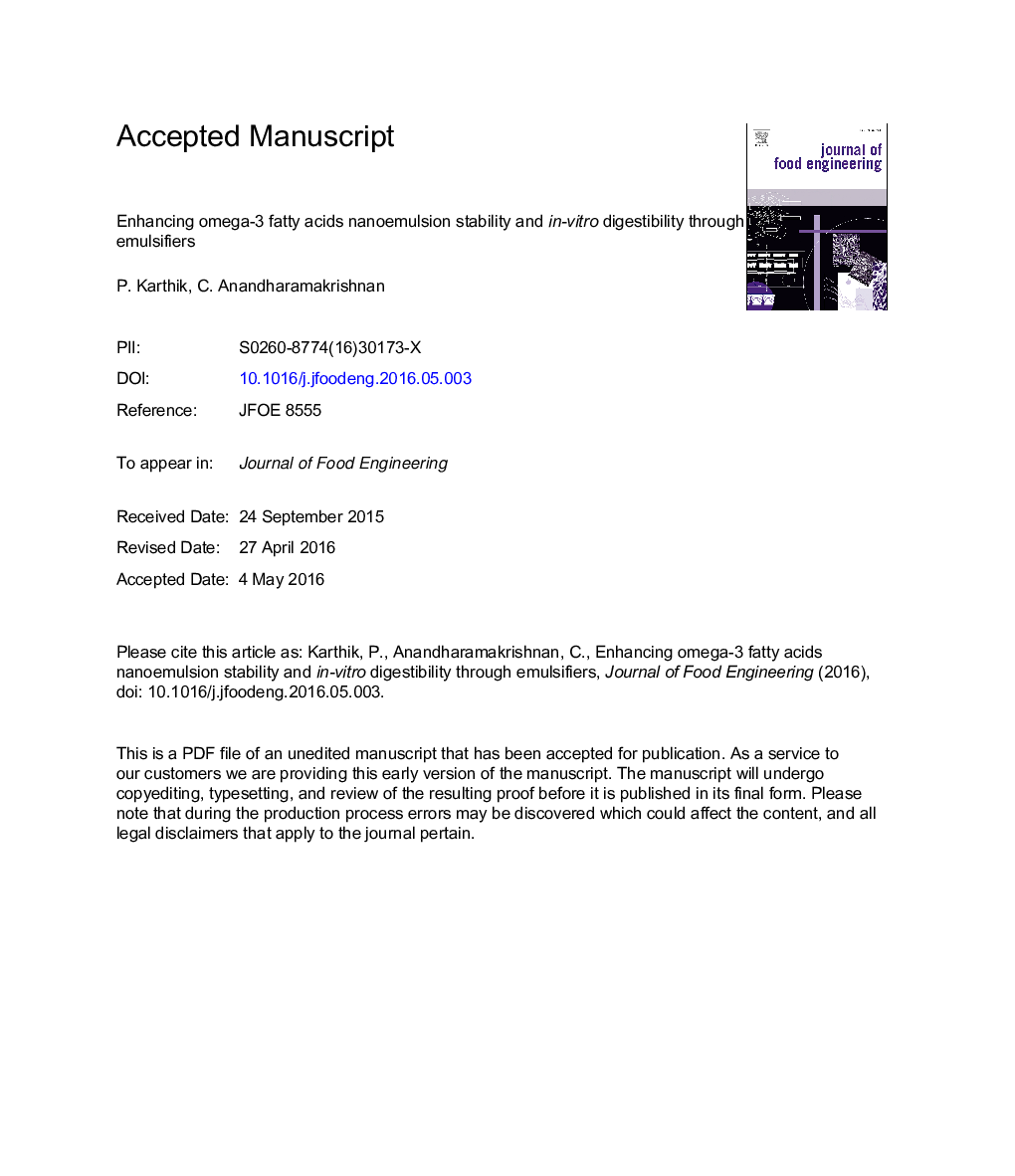| Article ID | Journal | Published Year | Pages | File Type |
|---|---|---|---|---|
| 6664885 | Journal of Food Engineering | 2016 | 58 Pages |
Abstract
Omega-3 fatty acids are used to fortify many kinds of functional foods to meet the nutritional requirements of human biological system. However, it is relatively unstable during processing and storage. Nano-emulsification can be used as delivery system to increase the stability. Hence, docosahexaenoic acid (DHA) oil-in-water nanoemulsions were prepared by microfluidization with different emulsifiers such as Tween-40 (T-40), sodium caseinate (Na-ca) and soya lecithin (SL). The physiochemical stability of nanoemulsions was investigated under different storage conditions. T-40 nanoemulsion depicted lower mean diameter (148 nm) than Na-ca (206 nm) and SL (760 nm). Structural characteristics of T-40 nanoemulsion were retained during storage, whereas that prepared with Na-ca resulted in flocculation and coalescence. Less fractionated patterns of crystallization and melting were observed for nanoemulsions than bulk oil. No change in fatty acids profile was observed in nanoemulsions. In addition, T-40 yielded lower peroxidation. Thus, an increase in stability and extent of lipid digestibility (ɸmax) were achieved with T-40 nanoemulsion.
Related Topics
Physical Sciences and Engineering
Chemical Engineering
Chemical Engineering (General)
Authors
P. Karthik, C. Anandharamakrishnan,
